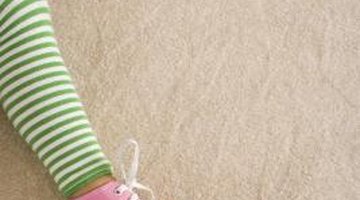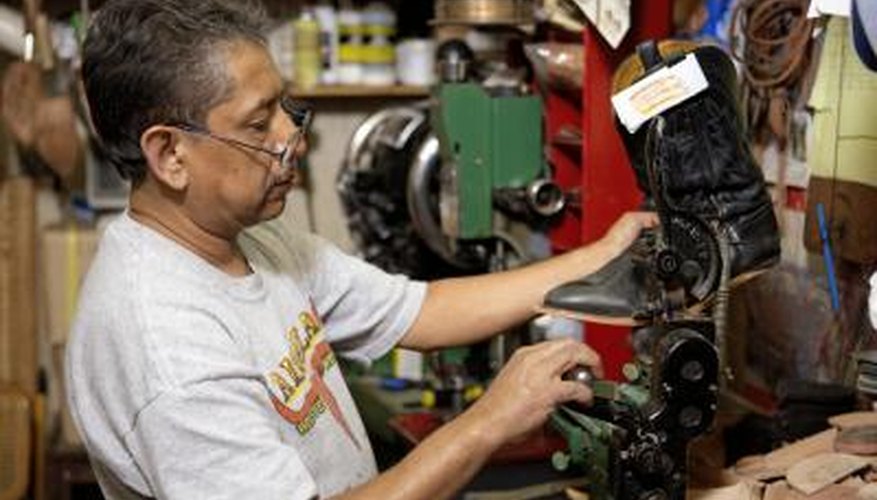A favourite pair of shoes worn over an extended period of time will eventually require repair. It is common for shoes to crack or break away at the sole, despite how well you take care of them. Before you toss them into the trash or take them to a shoe-repair shop, try to repair them yourself. Most shoe-repair shops use glue to mend cracked soles and heels and to fix tears in the upper shoe. This is also done at home with lasting results.
Urethane Rubber
Urethane rubber is used to make moulds, sealants, and adhesives for shoe repair. It can be applied to a separated or damaged sole. The rubber is heat resistant and also keeps water from entering the shoe. This glue does not stiffen the shoe once dry, allowing the shoe to retain flexibility.
- Urethane rubber is used to make moulds, sealants, and adhesives for shoe repair.
- This glue does not stiffen the shoe once dry, allowing the shoe to retain flexibility.
Neoprene Cement

Neoprene-cement glue is used to bond leather, crepe, rubber, thermal plastic rubber, polyurethane, wood and plywood, paper, and thermal plastic polyurethane. Since shoes come in a variety of materials, this all-purpose glue is ideal. It is often used in shoe repair because of its strong bonding capability, fast drying time and noncorrosion on the gluing surface. This glue works best for repair of rubber soles but is also used for other shoe materials.
- Neoprene-cement glue is used to bond leather, crepe, rubber, thermal plastic rubber, polyurethane, wood and plywood, paper, and thermal plastic polyurethane.
- This glue works best for repair of rubber soles but is also used for other shoe materials.
Super Glue

Super glue is popular for its fast and permanent bonding properties. The advantages of super glue include its fast drying time, easy availability -- you can find in most hardware and craft shops -- and its ability to seal leaks in soles. Wear gloves when applying super glue as its quick-bonding capabilities can affect the skin.
Epoxy Glue
Epoxy glue is used in crafts, shoe repair and metal repair. Epoxy is great for stronghold repairs but requires a little more attention when applying it to shoes. The hardening affect of epoxy glue is determined by the amount of catalist present in the resin formula. Epoxy with large amounts of the catalyst will dry faster, however, the glue will be brittle and may crack over time or in cold weather. Glue formulas that have less catalyst will take longer to dry but will be much more stable. When considering epoxy glue for shoe repair, it better to use the glue that will take longer dry, about 24 hours, rather than the less stable glue with three-minute results.
- Epoxy glue is used in crafts, shoe repair and metal repair.
- Epoxy with large amounts of the catalyst will dry faster, however, the glue will be brittle and may crack over time or in cold weather.
